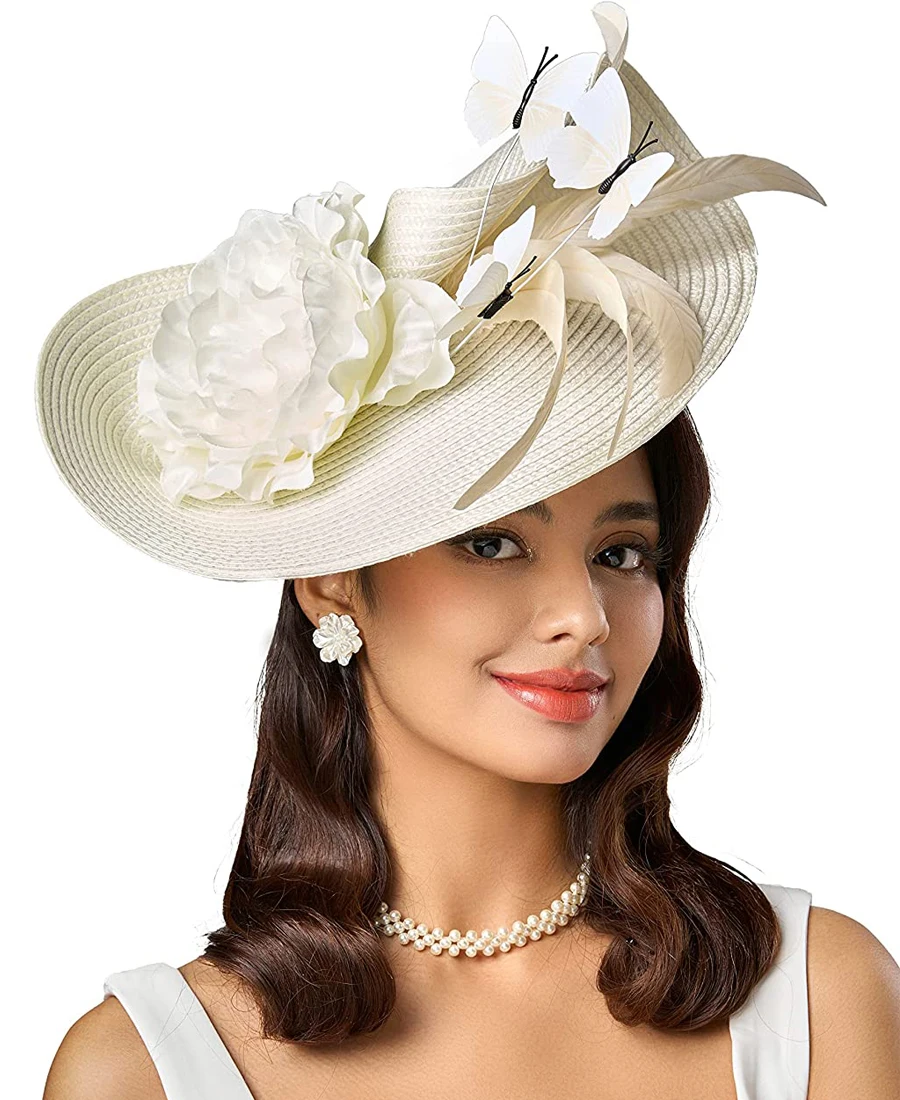
Introduction
Fascinators are a quintessential accessory in the world of fashion, often seen at formal events, weddings, and horse races. These elegant headpieces add a touch of sophistication and whimsy to any outfit. This article delves into their history, various styles and materials, occasions for wearing them, and tips for choosing and styling the perfect one.
The History of Fascinators
It has a rich history, evolving from simple hair adornments to elaborate fashion statements:
- Origins: These stylish headpieces trace their roots back to the 17th and 18th centuries when women adorned their hair with feathers, flowers, and ribbons. These early versions were often modest and practical.
- 19th Century: The term originally referred to a light, lacy head covering popular in the 19th century, similar to a shawl or scarf.
- 20th Century Evolution: In the mid-20th century, they began to resemble the modern designs we see today, thanks to influential milliners who introduced more structured and decorative styles.
- Contemporary Fascinator: Today, they are a staple at high-society events, particularly in the UK and Australia, where they are a common sight at weddings, the races, and other formal gatherings.
Styles and Materials
These come in a wide array of styles and materials, each offering a unique look:
- Styles:
- Pillbox: A small, round hat often adorned with veils, feathers, or flowers.
- Headband: Attached to a headband for easy wear, often featuring dramatic designs.
- Comb or Clip: Secured with a comb or clip, providing flexibility in positioning.
- Mini Hats: Tiny, decorative hats that sit atop the head, often tilted for a whimsical effect.
- Materials:
- Feathers: Used to create dramatic, airy designs.
- Netting and Veiling: Adds a touch of mystery and elegance, often covering the face partially.
- Flowers: Artificial or real flowers bring a natural, romantic feel.
- Sinamay: A lightweight, woven material commonly used in millinery.
- Crinoline: A stiffened fabric that holds shapes well, often used in loops and bows.
- Beads and Crystals: For added sparkle and glamour.
Occasions for Wearing Fascinators
These are perfect for a variety of formal occasions:
- Weddings: Brides, bridesmaids, and guests often wear to add elegance and individuality to their outfits.
- Horse Races: Events like the Royal Ascot in the UK and the Melbourne Cup in Australia are renowned for their extravagant headwear.
- Garden Parties: High-society garden parties and afternoon teas are ideal settings.
- Formal Events: Black-tie events, galas, and charity balls often see guests donning as part of their formal attire.
Choosing the Right Fascinator
Selecting the perfect ones involves considering several factors:
- Face Shape:
- Oval: Most styles suit oval faces, so you can experiment with various designs.
- Round: Choose with height and vertical elements to elongate the face.
- Square: Soft, rounded designs with feathers or flowers can soften angular features.
- Heart-Shaped: Opt for medium-sized that balance the width of the forehead and the narrow chin.
- Hairstyle:
- Updos: Small to medium work well with updos, adding a touch of elegance without overwhelming the hairstyle.
- Down: Larger ones can complement loose hair, creating a dramatic and balanced look.
- Short Hair: Headband or comb are ideal, providing secure and stylish options.
- Outfit Coordination:
- Color: Match it to your outfit for a cohesive look, or choose a contrasting color for a bold statement.
- Style: Ensure that complements the formality and style of your outfit.
Styling Tips for Fascinators
Wearing it with flair involves a few key tips:
- Placement: This stylish headpiece is typically worn on the side of the head, above the eyebrow, at a slight angle. Experiment with different positions to find the most flattering look.
- Securing: Ensure it is securely fastened using the attached comb, headband, or clip. Additional bobby pins can provide extra security, especially for larger designs.
- Balancing Act: Balance your overall look by keeping other accessories minimal. Let it be the focal point.
- Confidence: Wear it with confidence. It’s a statement piece meant to be noticed and admired.
Caring for Your Fascinator
Proper care will keep it looking its best for years to come:
- Storage: Store in a hat box or a dust-free environment to protect it from dust and damage.
- Cleaning: Gently spot clean with a soft cloth and mild soap if necessary. Avoid soaking or immersing in water.
- Maintenance: Regularly check for loose beads, feathers, or other embellishments and secure them as needed.
Conclusion
Fascinators are a versatile and stylish accessory that can elevate any formal outfit. With a rich history and a wide range of styles and materials, they offer endless possibilities for personal expression. By choosing the right design and styling it with care, you can make a memorable fashion statement at any event. Embrace the elegance and charm of this timeless headpiece and let your personality shine.


